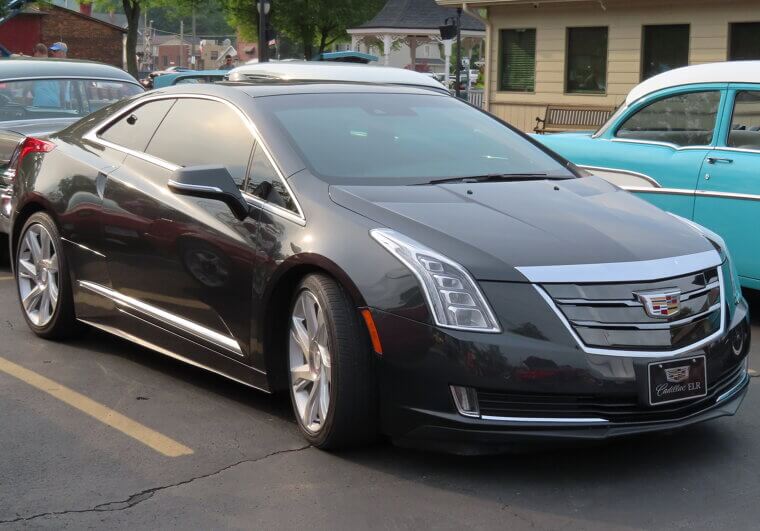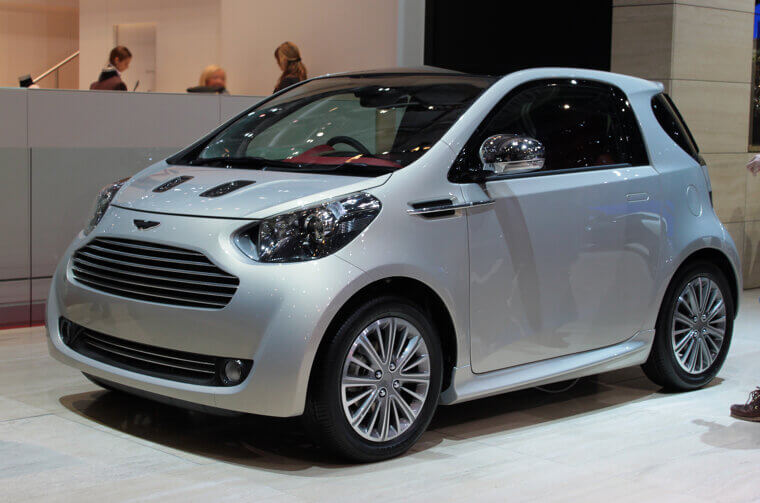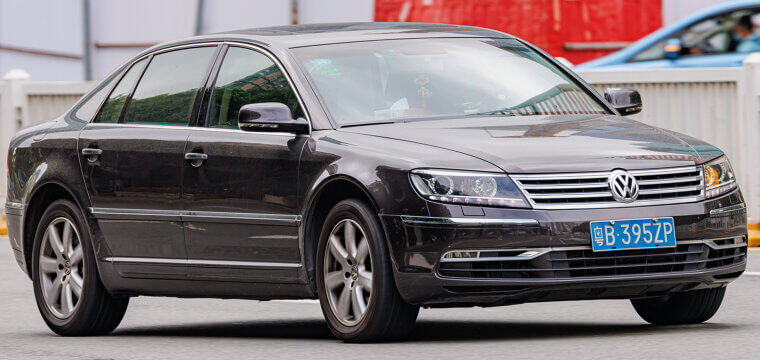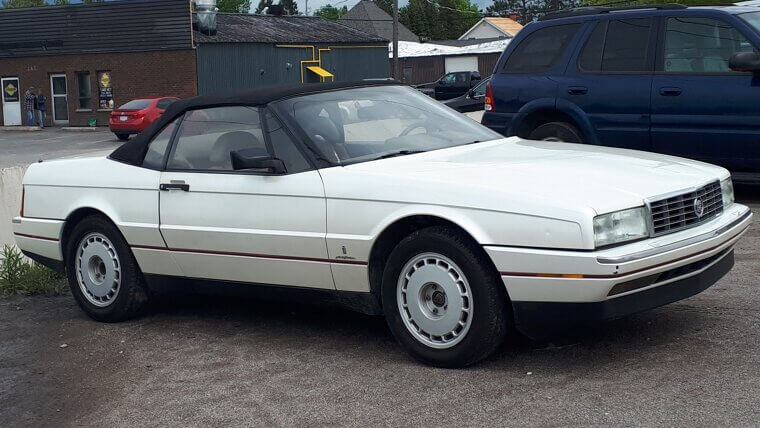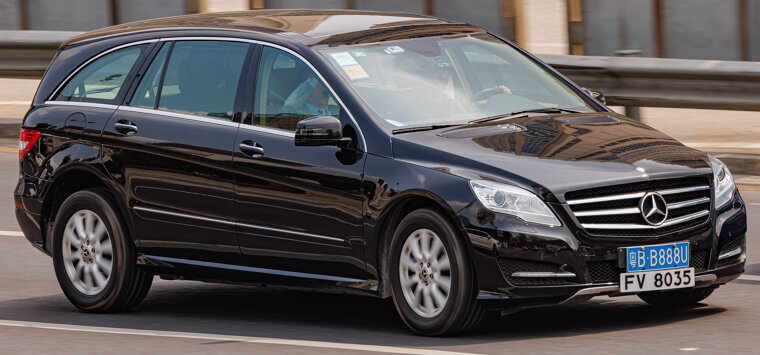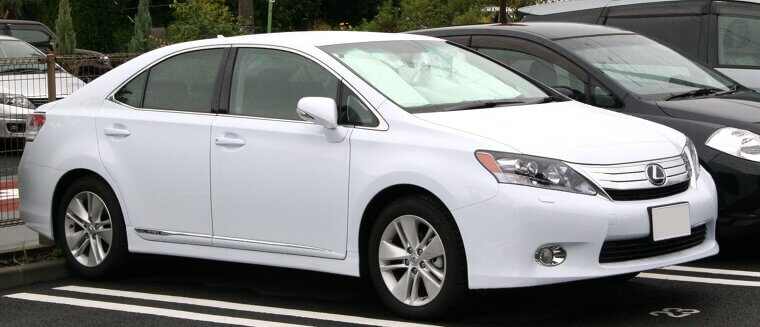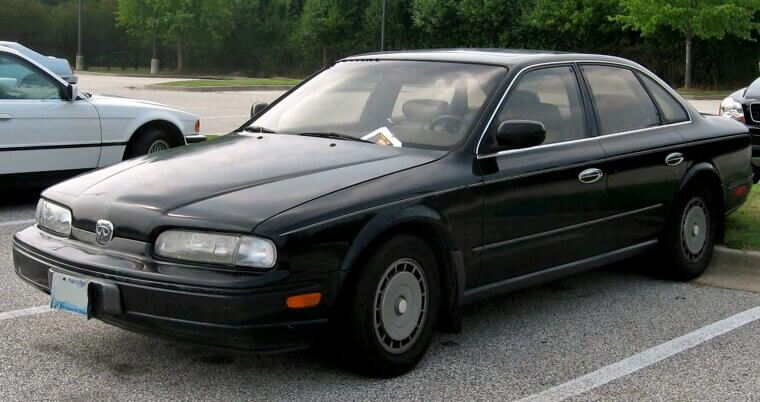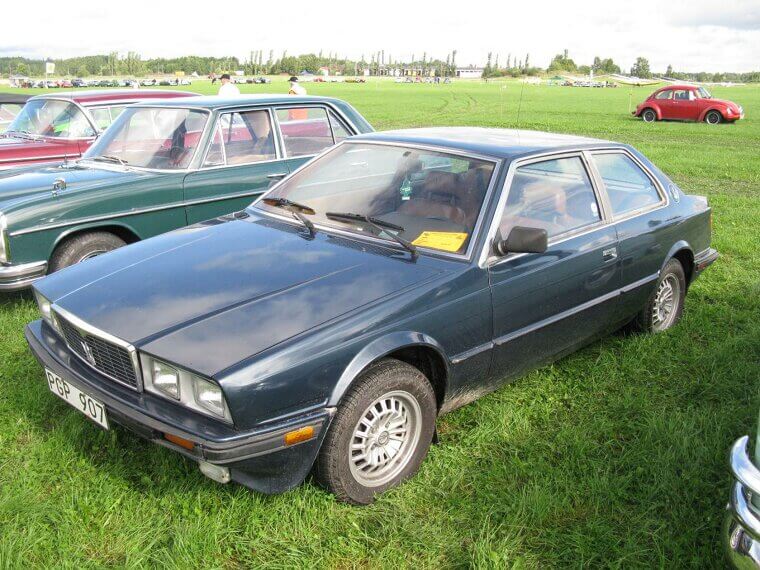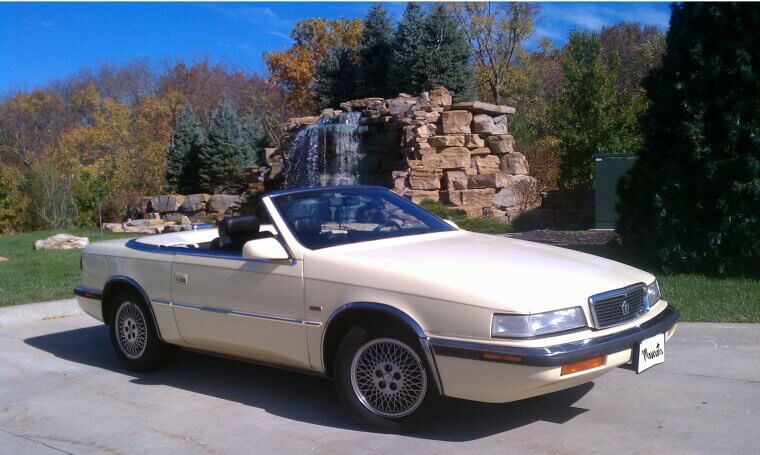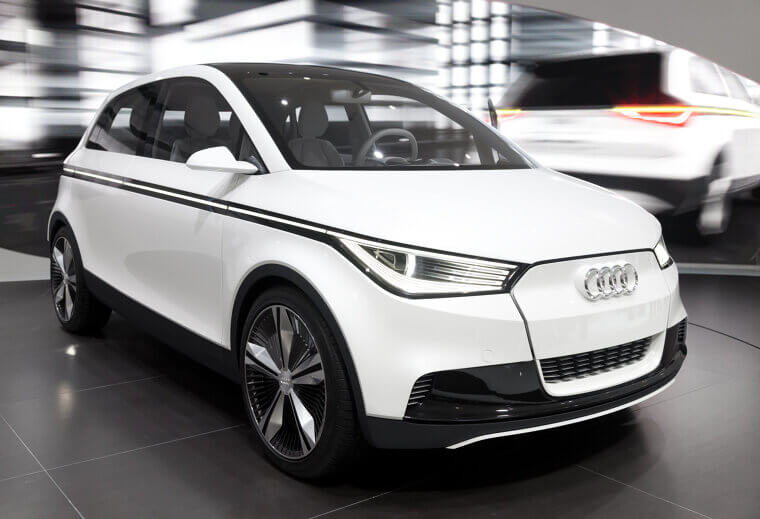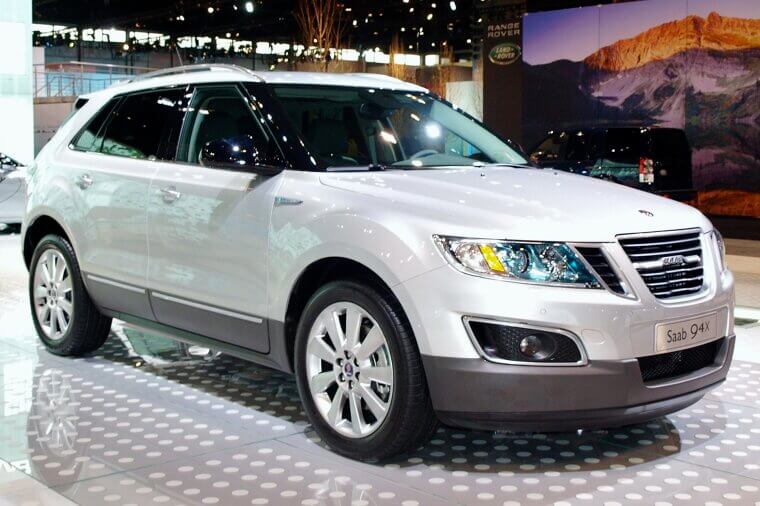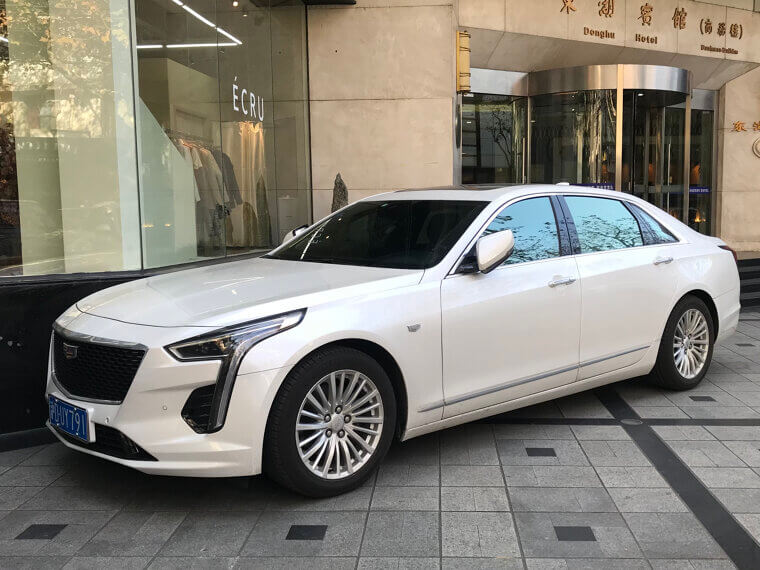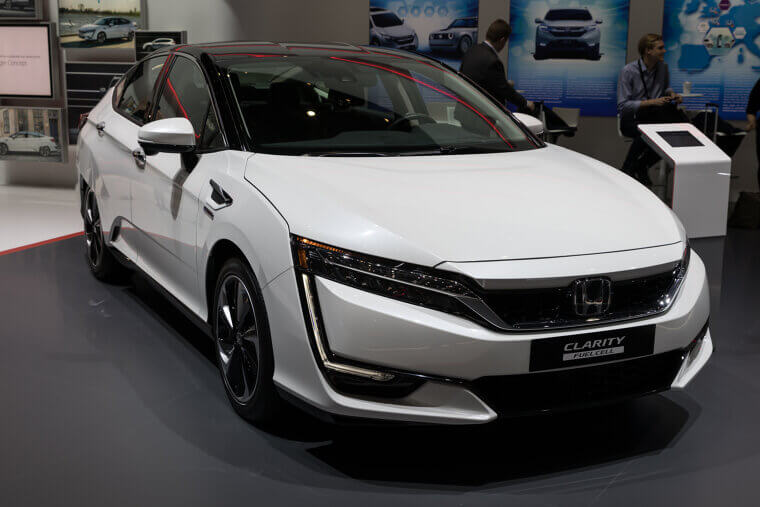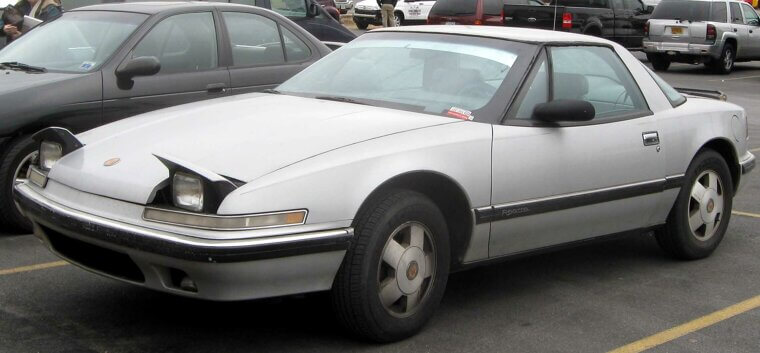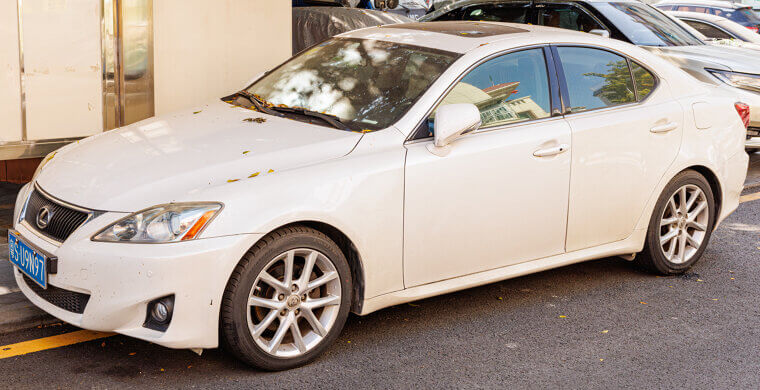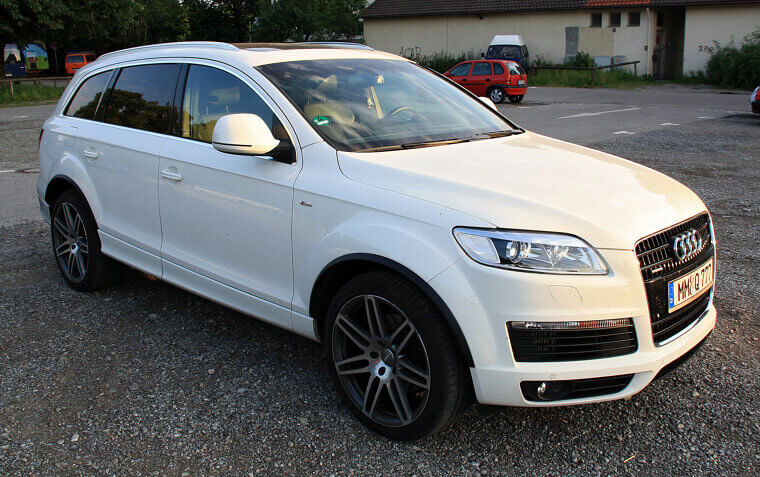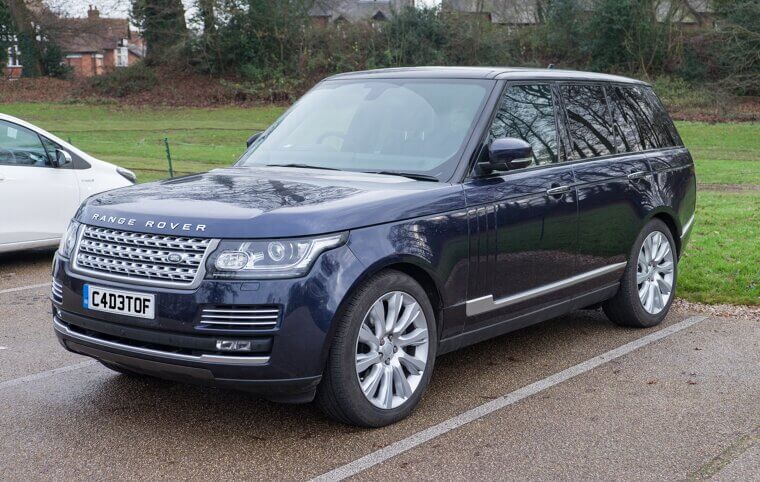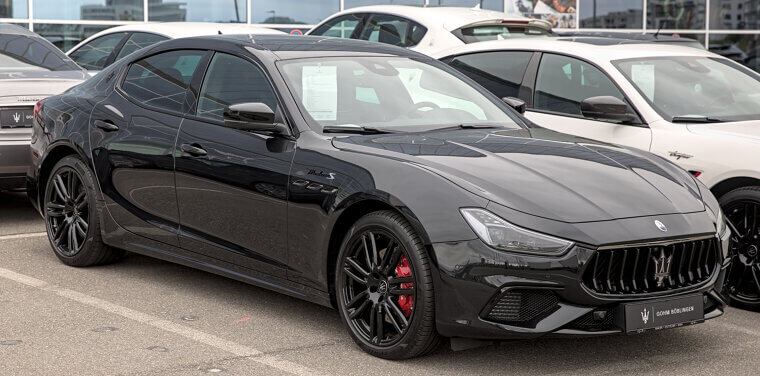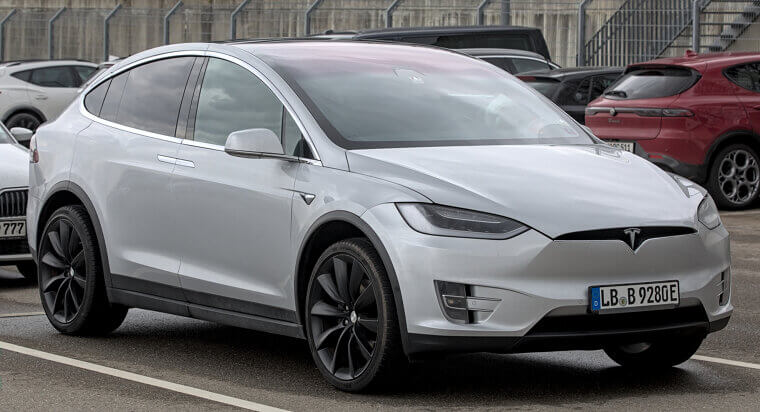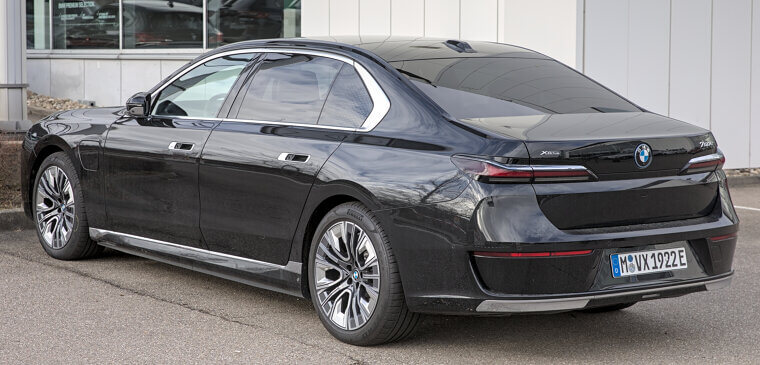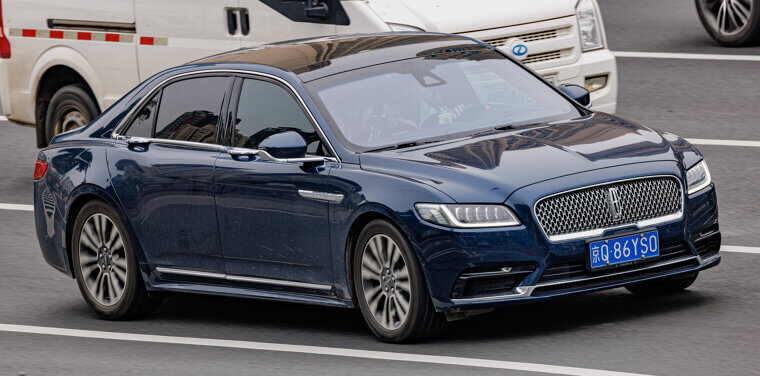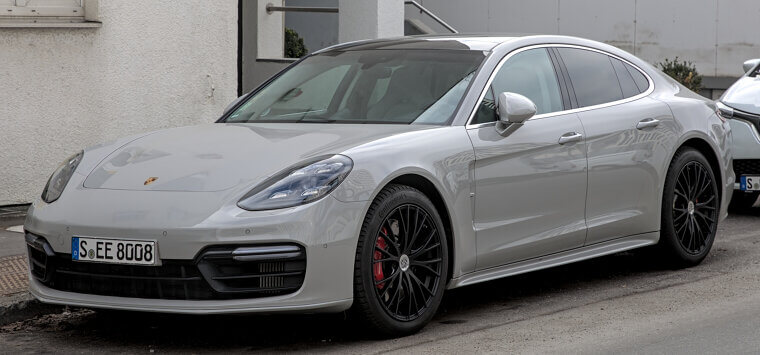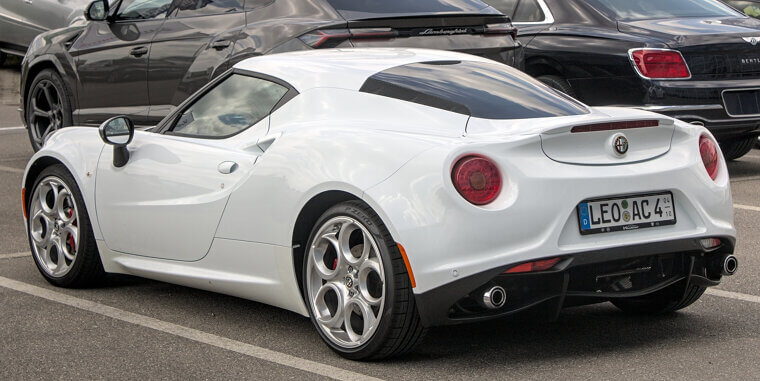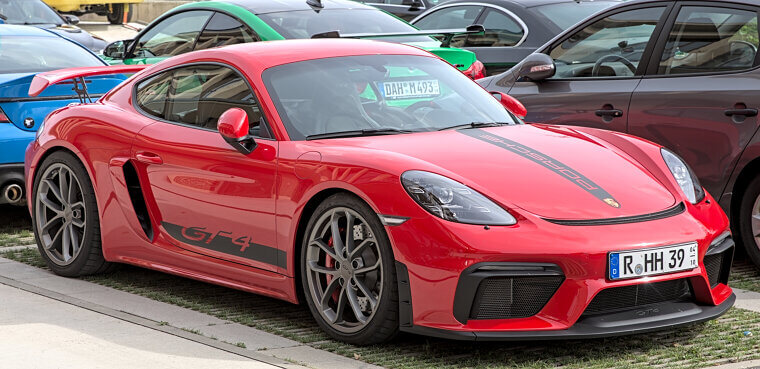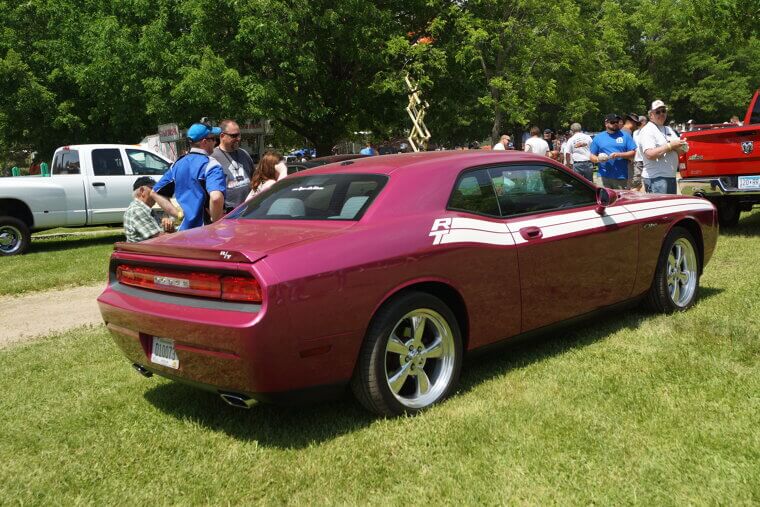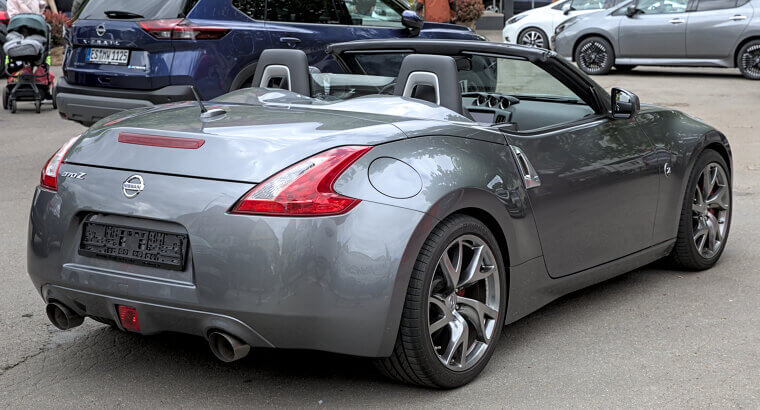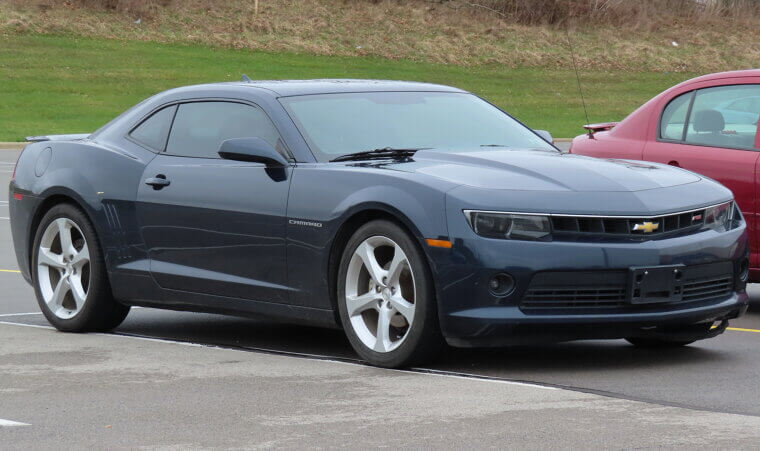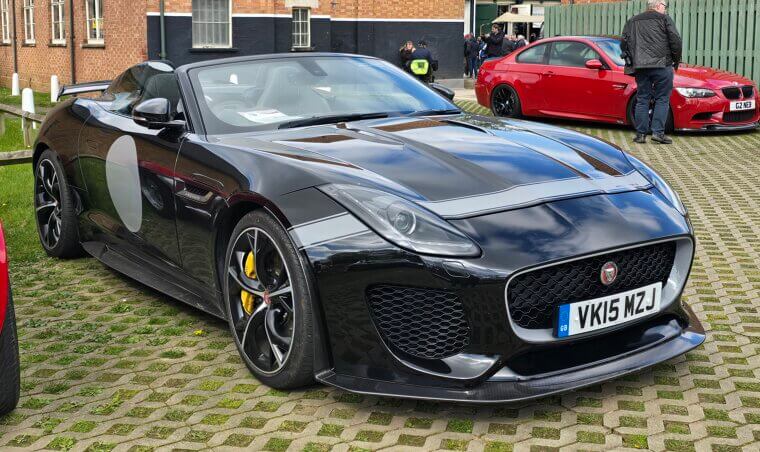Jaguar X-Type
Jaguar's entry-level X-Type alienated many potential customers and fans, trying to reach a wider audience with this abomination. Although it was based on the Ford Mondeo, it never met the performance and luxury standards associated with the Jaguar brand (and let's be honest, they're pretty high). Its poor quality and unimaginative design were criticized by drivers and critics alike - and we don’t blame them.
Cadillac ELR
Cadillac intended the ELR to be a high-end plug-in hybrid when it first debuted, but its exorbitant price of more than $75,000 was a significant deterrent. You’d think they’d back up that insane price tag with, well, quality or something. But the ELR didn't provide enough value to warrant the higher price tag and it didn’t help that the Chevrolet Volt was much, much cheaper.
Lincoln Blackwood
Surprisingly, Lincoln's initial attempt to enter the luxury truck market with the Blackwood was, in a word, unsuccessful - and short-lived. Its odd blend of luxury and impracticality, such as a carpeted but non-functional truck bed, did not appeal to purchasers despite being marketed as a premium pickup. It was costly, with a starting price of $52,000, and had a complicated design. Most people couldn't decide if it was a sedan or a truck... and neither can we!
Aston Martin Cygnet
Aston Martin's unexpected and somewhat perplexing attempt at a small city car, the Cygnet, fell far short of expectations. This little vehicle, which was essentially a rebadged Toyota iQ, cost a whopping $40,000 to buy. Customers were met with a small, underpowered urban automobile instead of the excitement and status of an Aston Martin sports car. The lesson here is: stick to what you know.
Volkswagen Phaeton
Volkswagen's Phaeton, a scientifically remarkable but economically unsuccessful car, was an attempt to get into the luxury sedan market. The Phaeton's rather high price was a pill most drivers simply weren't prepared to swallow. So, even with its amazing craftsmanship, cutting-edge technologies, and comfort, it was… still just a VW, but, like, a super expensive one.
Cadillac Allante
Cadillac intended for the Allanté to compete with European luxury roadsters, but the design was not successful. The car's body was designed by Pininfarina (which is fun to say), but the added complexity didn’t actually add much value. Costing more than $50,000, it fell short of rivals' performance and sophistication.
Mercedes-Benz R-Class
With the R-Class, Mercedes tried to combine luxury and minivan functionality, but the end product was a jumbled car that felt out of place in both categories. Its high cost and limited functionality turned off customers of luxury SUVs, and it didn’t help that the car was plagued by mechanical issues.
Lexus HS 250h
The Lexus HS 250h was supposed to be the brand's high-end hybrid vehicle, but it didn't do well. It never made an impression since its style was too uninteresting for the premium market, and its fuel efficiency was only marginally better than that of less expensive hybrids.
Infiniti Q45
The Q45, which was intended to be Infiniti's flagship luxury sedan, couldn’t quite find its footing in a competitive market. The Q45's lackluster driving characteristics and unimaginative outward appearance failed to wow high-paying consumers, and no one else really wanted it either.
Acura ZDX
Most consumers found the coupe-like crossover design of Acura's ZDX to be excessively - what’s the word - avant-garde. Despite being promoted as a daring and fashionable substitute for conventional SUVs, it was difficult to sell due to its ungainly size, small cabin, and high cost. Additionally, buyers bemoaned its general uselessness, which stood in stark contrast to its SUV advertising.
Maserati Biturbo
The Maserati Biturbo left a disappointing history despite its goal of introducing Italian luxury and performance to a wider audience. Despite having two (!!!) turbochargers and other great specs on paper, the automobile had ongoing reliability problems, namely its aggressively subpar construction and wealth of mechanical issues.
Lincoln Mark LT
Lincoln made another attempt with the Mark LT, a more practical luxury pickup, following the Blackwood's demise. And just like its predecessor, it failed to find a market in the premium sector, even though it was, in all fairness, a better car overall. Unfortunately, it didn't provide enough features to set it apart from other luxury trucks or make its price tag worthwhile.
Chrysler TC by Maserati
Maserati's Chrysler TC was a disappointing attempt to bring together the greatest features of both companies. The TC's Italian design elements were unable to conceal its American heritage; it was essentially a dressed-up Chrysler LeBaron. Patriotic, sure, but customers thought it was too expensive and lacked the sophistication they anticipated from a Maserati at $33,000.
Audi A2
The Audi A2 may actually be one of the best cars on this list, but its failure is a result of too much, too soon. It was a cutting-edge small car with excellent fuel economy and lightweight aluminum construction, but it was ahead of its time. Many prospective purchasers were turned off by its odd design and expensive price since they couldn't afford the price for a compact, city-focused car.
Saab 9-4X
The Saab 9-4X became a victim of Saab's financial troubles at a time when the company was already in danger of going out of business. Despite being praised for its elegant appearance and seamless handling, customers were reluctant due to Saab's uncertain future. The lesson here is: You can trust Sweden… Honest.
Cadillac CT6
The Cadillac CT6 was supposed to turn the brand around in the market of luxury sedans, but it never quite had the effect Cadillac had hoped for. More seasoned European competitors eclipsed it in spite of its state-of-the-art technology and affordable prices. It was sleek, sure, but not the sleekest.
Honda Clarity
Despite its cutting-edge technology, the Honda Clarity, a plug-in hybrid and hydrogen fuel cell car, had trouble drawing in big crowds. Sales were severely impeded by its high cost and the scarcity of hydrogen fueling facilities. Luxury purchasers were turned off by its performance, appearance, and probably its silly name, too.
Buick Reatta
The Reatta, Buick's effort at a sporty luxury coupe, did not appeal to either luxury consumers or sports car aficionados. The Reatta lacked the performance necessary to compete in the sports car market, and its price was comparable to that of quicker and more thrilling automobiles. It was also difficult to sell in the premium market due to its, shall we say, peculiar design.
Lexus IS 250
Poor Lexus, always getting the short end of the stick. The underpowered 2.5-liter V6 engine of the Lexus IS 250, especially the 2007–2008 vehicles, generated only 204 horsepower. As a result, it could neither excite nor impress. Furthermore, its allure as a useful luxury sedan was undermined by the small back seats and even smaller trunk.
Volvo C30
The Volvo C30, which debuted as a sleek little hatchback, had trouble making a name for itself in the luxury market. The C30 lacked the performance and sophistication one would expect from a luxury brand, despite its distinctive look and cozy cabin. Its short cargo room and restricted back seat capacity made it less useful.
Infiniti Q50
The 2014 debut of the Infiniti Q50 drew poor reviews because of its uneven handling and perplexing dual-screen infotainment system - you know, because one screen wasn’t enough to distract drivers on the road. Although it had a variety of strong engines, the steering-by-wire system was unresponsive and made driving less enjoyable.
Audi Q7
Customers were somewhat disappointed by the Q7's third-row seating's tightness and the fact that its high price tag did not always correspond to the degree of performance and elegance they had anticipated.
Land Rover Range Rover
Despite its iconic position, the Land Rover Range Rover has had dependability problems, especially with versions from the last ten years. Owners frequently complained about issues with the drivetrain, air suspension, and electronics of the car. The Range Rover's standing as a dependable luxury SUV has been damaged by these issues with dependability. Talk about a long fall from grace.
Maserati Ghibli
When contrasted to its German competitors, the Maserati Ghibli's poor interior quality and lack of refinement have drawn criticism. The vehicle was first offered with the promise of Italian luxury and performance. The Ghibli's Chrysler-sourced infotainment system also didn't seem appropriate for a luxury car.
Tesla Model X
Despite being revolutionary with its electric drivetrain and Falcon-wing doors, the Tesla Model X had several quality control problems. Owners complained about software bugs, fit and finish issues, and door alignment issues. The vehicle's limited service network and premium price point made things even more frustrating. Hey, that’s just like Elon’s Twitter as well!
BMW 7 Series
When compared to earlier incarnations, the sixth-generation BMW 7 Series cars were criticized for lacking driving involvement. Some devoted BMW fans were offended by the shift to a more solitary and comfortable experience (because BMW drivers insist on discomfort, thank you very much). Its allure was further diminished by the intricate iDrive technology and costly upkeep.
Lincoln Continental
The last time we saw this many Lincolns was our last payday (we’ll see ourselves out). The 2017 resuscitation of the Lincoln Continental failed to live up to the original nameplate. Some people thought the car's design was uninteresting, and its front-wheel-drive system didn't perform as well as rivals with rear-wheel drive.
Porsche Panamera
Despite its remarkable performance, the Porsche Panamera (which is also really fun to say) was criticized for its divisive appearance and poor rear-seat comfort. Buyers found it difficult to justify the high price and the costly options list. Still, props for the alliterative naming scheme!
Ford Mustang EcoBoost
Despite its renowned name and attractive style, the Ford Mustang EcoBoost was criticized for its poor performance. Due to its poor driving dynamics, the turbocharged four-cylinder engine failed to produce the thrilling power that Mustang fans had come to expect.
Alfa Romeo 4C
Despite being lightweight and aesthetically pleasing, the Alfa Romeo 4C was criticized for its lack of practicality and poor everyday usability. Many believed that it put appearances before performance and driver enjoyment because of its difficult handling dynamics, harsh ride quality, and sparse interior comfort. Then again, you don’t buy an Alfa Romeo because it’s easy - you buy one specifically because it’s difficult, so that you can say that you tamed the beast.
Porsche 718 Cayman
Despite being known for its luxury, the Porsche 718 Cayman's base model drew criticism. Its turbocharged four-cylinder engine, according to enthusiasts, lacked the soul-stirring sound and exhilaration that Porsche is known for, leaving purists pining for its six-cylinder predecessors.
Dodge Challenger R/T
Despite its pedigree as a muscle vehicle, the Dodge Challenger R/T was frequently lambasted for its uninspired handling and heavy weight. Well, at least it was challenging someone! Although the V8 engine produced respectable power, its bulky design hindered its agility, making it less exciting than its competitors, who prioritized performance.
Nissan 370Z
Despite its heritage and stylish look, the Nissan 370Z was criticized for its antiquated electronics and unsatisfactory driving experience. Because of its outdated appearance and dearth of noteworthy upgrades, fans yearned for greater excitement and innovation to keep up with the standards of contemporary sports cars. But the heritage, guys! The heritage!
Chevrolet Camaro 2LT
Despite its attractive appearance, the Chevrolet Camaro 2LT was criticized for performing poorly when compared to higher specification levels. Driving fans were left wanting a more thrilling experience because its base engine lacked the electrifying power and responsiveness expected from a Camaro. If only consumers could get their hands on that transforming Camaro from that robot movie…
Jaguar F-Type 2.0
Despite retaining its sophisticated appearance and appeal, the Jaguar F-Type 2.0 was criticized for having a four-cylinder engine. Some enthusiasts were dissatisfied with the entire driving experience since they believed it lacked the exhilarating performance and roaring exhaust note that are characteristic of the F-Type.


